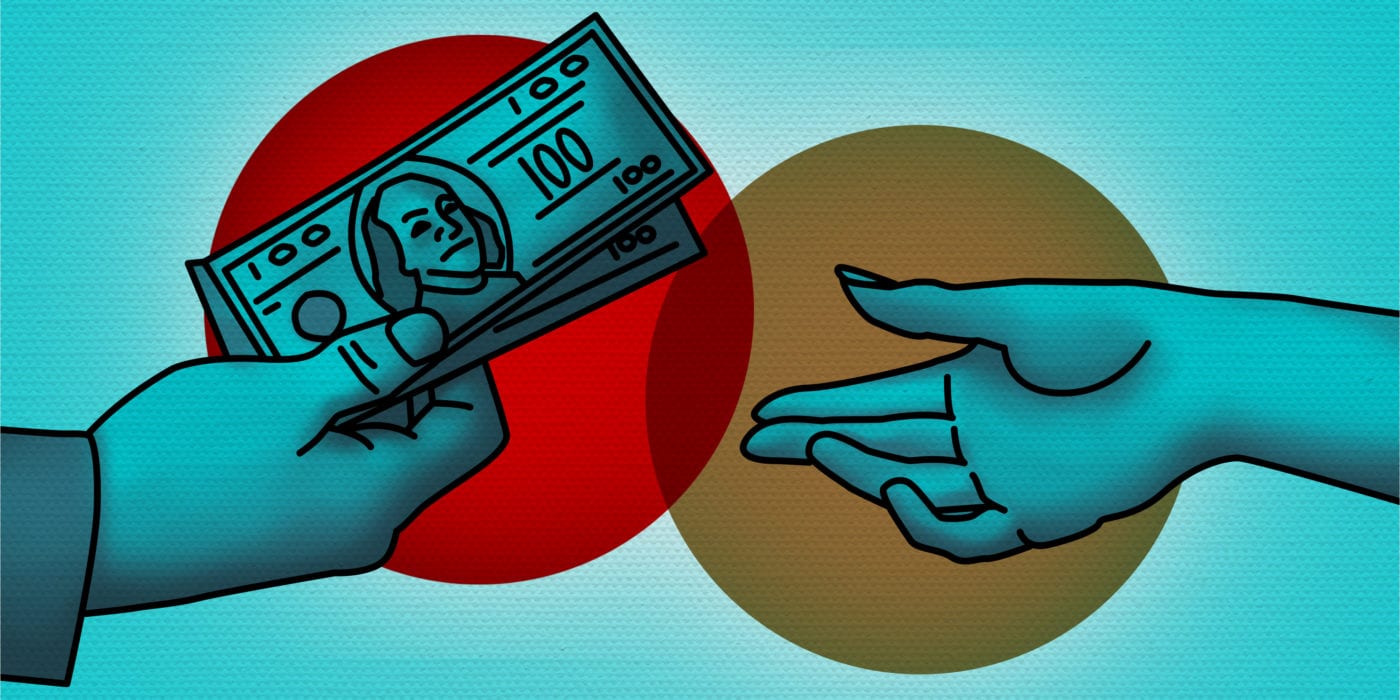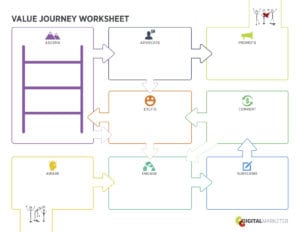If you’re a business owner, or working on behalf of one in the marketing realm, you’ve probably considered, are currently considering, or already attempting to engage paid traffic as part of your marketing efforts. Even beginning the research phase can lead to more questions than answers. We’ve simplified the concepts and put together some basics for beginners to get you on track to understanding paid traffic and how it can be used to positively affect your bottom line.
Organic Traffic vs. Paid Traffic
If you’re considering taking the plunge with paid traffic, it’s important to understand what differentiates paid traffic from organic traffic. Both can offer a number of benefits for your business depending on what your goals are and what you’re looking to get from your online traffic.
Let’s start with organic traffic.
Organic traffic is wonderful because above all else, it’s free. However, as the name would indicate, organic traffic is…well…organic. This means that you have little to no control over when your traffic will come, where it’s leading, or whether your consumers are turning it off or not. An easy way to think about this type of traffic is to think of the sun. We can assume that it’s going to come out every day, but there are cloudy days, there are rainy days, and then there’s inevitably night that comes and limits the amount of sun that can reach a person per day. However, when we look at paid traffic we see a very different situation.
Now, let’s look at paid traffic.
Paid traffic is like your light switch. You can turn it on and bask in the light whenever you need it. You have control over where the light goes. If you need light in the kitchen, you simply turn those lights on while you’re cooking. Or perhaps you’re reading before bed. You can turn on your bedside lamp while you’re reading, and turn it off when you’re ready for bed. The same goes for paid traffic. You can turn it on when you need it, and, just as important, off when you don’t need it. As the name would indicate, this type of traffic does involve cost before it can become useful. However, with the right intention and messaging, paid traffic can be used to acquire customers to allow you to come out on top of search results.
Understanding the differences between these two types of traffic will allow you to better understand how to connect with your customers as they enter the buying journey with your business.
The Customer Value Journey
There are steps that customers generally take when considering to purchase your product. Marketers call this the Customer Value Journey. This journey follows the customer through the following phases:
As customers journey through these phases, they enter different degrees of engagement with your brand. This journey is guided by a road that is the traffic source. It’s up to your business to decide which source is right for you, whether it’s an organic post, a paid google search ad, a Facebook engagement boost, or other forms of paid traffic advertising. Depending on which road you decide to go down, you’ll need a different vehicle to remain equipped for the terrain.
The vehicle to get your customer’s on the road through the customer value journey is your content. This might come in the form of written copy for a google search ad, a video explaining your products for your Facebook Live audience, a microblog on your business’s inception, or even an organic blog to drive viewers to your website. Each of these vehicles is specifically tailored to the terrain of the road. In this case, traffic sources, to best guide customers to the final steps of the customer value journey.
Understanding the steps your customers go through before committing to your brand is absolutely essential to the success of any organic or paid traffic strategy. By better understanding this process, you gain a road map of where your traffic sources need to lead, and you also gain insight into what content will best get them there. It’s important to note that at various stages within the customer buying journey, they get categorized into different types of traffic that also require special attention to ensure that they are most accurately speaking to the needs and wants of the audience.
Types of Traffic
We’re getting warmer! We’re almost to a place of understanding with paid traffic. Now we need to understand the difference between cold, warm, and hot traffic and what engaging with each looks like.
Cold Traffic:
This is starting from the bottom. Cold traffic is anyone who has yet to engage with your business. If you’re a brand new business, this is absolutely the starting line. When you’re looking to reach this cold segment of traffic, there are a few things you’re aiming to do.
First, you want to introduce your brand to this traffic for the first time. This might be telling your business’s story, a letter from the owner, or a series of posts explaining your core concepts.
Second, you want to create an opportunity for this traffic to follow up and continue down the customer value journey. Email sign-ups, opening up messenger conversations on social platforms, or even offering follow up phone calls are all ways in which you as a business can open the opportunity for follow up communication.
Finally, the more you can segment and tailor follow-up opportunities, the more specific and tailored that follow-up can be. The real goal here is to make sure that the follow up is as relevant as possible for this cold traffic. The idea here is that by doing so you can expedite the move of this traffic through the customer value journey, and eventually move this cold traffic to warm traffic.
Warm Traffic:
You know your business’s warm traffic. This traffic has opted into your email list, they’re following and engaging with you on social media, they have spent time on your website and you may even know some of these individuals by name! The important note here is that these individuals have not yet converted with your brand. However, that is the main goal when we look at engaging with these individuals.
We want to push them to convert, but we also want to keep the relationship going with re-engagement opportunities as well. Eventually, with enough relationship-building, the hope is that this traffic will feel comfortable and knowledgeable enough to convert and move their way through the customer value journey into Hot traffic.
Hot Traffic:
These are people that you know. These are your customers and, potentially, your brand advocates. At a novice glance, it might seem like these are the least important individuals to put effort towards since they have already committed to purchasing.
However, most marketers and businesses can cite, by heart, the industry-accepted statistic that it can cost almost 5x as much to acquire a new customer when compared to spending efforts to keep an existing customer engaged. That being said, the goals of Hot traffic and Warm traffic tend to look similar. We’re looking to convert prospective past customers into current customers again, and re-engaging those individuals through whatever means are appropriate.
Understanding the stages your customers are in allows you to know where it is that you should put your marketing dollars. This is dependent on the business, and a good solution to deciding whether cold, warm, or hot traffic should be your focus is to calculate your business’s Customer Lifetime Value, or CLV. CLV in its simplest form is how much revenue a business can expect to form an individual customer or account. However, you need to determine a few other metrics for your business before you can definitively decide where you put your paid traffic dollars.
Customer Lifetime Value
Before you can decide what your customer lifetime value is, there are a few other metrics you need to determine. Break out your calculators and follow along as we break down how you can determine the Customer Lifetime Value for your business.
First thing’s first, you need to determine the average purchase value for your business. Depending on the size and duration of your business, you may not be able to use your whole customer base for this calculation. Rather, you may opt for a sample to represent your customers and calculate that average. To calculate this, you will follow the following formula for each of your individual customers, or the individuals selected for your sample size:
Average Purchase Value = total revenue from customer
_______________________
total number of individual orders
You will then take all of these Average Purchase Values and average them in order to get your business’s Average Purchase Value.
Now that you know your purchase value, you need to determine how often people are buying. As before, if you have a large customer catalog, you may want to select a sample size in order to determine this. To calculate the Average Purchase Frequency Rate, you’ll need to follow the following formula:
Average Purchase Frequency Rate = Number of total purchases by individual
______________________
Total number purchases for business
As we did with the Average Purchase Value, you will either add up each of these values for all of your customers and determine the average, or you will do so with your sample size and get the average in that way.
We have our two averages, which means we are now able to calculate the average customer value for your business. Here’s how to calculate:
Customer Value = Average Purchase Value
____________________
Average Purchase Frequency Rate
Odds are, you’ll want to hang on to this number. While it’s useful information to know how much the average customer is bringing to your business, especially if you’re reporting to stakeholders, marketing VP’s, etc., when they convert, we still don’t have enough information to determine whether we should put our paid efforts behind your cold, warm, or hot traffic opportunities. To get that we need to know how long the average customer lifespan is.
Now, if you’ve been around for a while you may have years worth of data to work from. If that’s the case, you can skip the next steps and go straight to calculating your average customer lifespan.
However, if you don’t have years to wait, a good workaround is to calculate your business’s churn rate. This rate is defined as the rate at which customers stop doing business with someone. You can calculate this number using two sequential periods for time for your business. For example, you may look at how many people purchased in Q1 and how many people purchased in Q2. Here’s how to calculate your business’s churn rate given this example:
(note: these time periods can be years for comparison as well. The comparison periods are subject to the nature of your business and your available data.)
Churn Rate % = 1- Total # of customers who bought Q1 + Total # of customers who bought Q2
_____________________________________________________________
Total # of customers who bought Q1
In our example above, we have calculated the churn rate for each Quarter. However, had we compared two different years we would have an annual churn rate %.
Then, you’ll use the following formula to calculate your Average Customer Lifespan:
Average Customer Lifespan = 1
________
Churn Rate %
To calculate your Average Customer Lifespan, you’ll follow the following formula:
Average Customer Lifespan = Sum of Customers Lifespan
______________________
Total Number of Customers
(note: You may want to select a reasonable sample size as we did for our first two calculations.)
Now that we have all of these calculations, we are finally able to calculate Customer Lifetime Value. To calculate follow the formula below:
Customer Lifetime Value = Customer Value
____________
Average Customer Lifespan
Now, you now know how long any given customer is expected to spend with your brand.
Determinations
You can begin making some decisions when it comes to engaging with paid traffic. Using these steps avoids needlessly throwing ad dollars into paid traffic that is not going to benefit your bottom line.
Depending on how long your customers are spending with your business you can now determine whether cold, warm, or hot traffic should be your business focus. If you have a relatively short Customer Lifetime Value, then you know that your spend is better used directing your efforts towards cold and warm traffic. The opposite can be said for businesses who find that they have a rather long customer lifetime value.
Depending on your budget and resources, your approach towards your paid traffic opportunities will absolutely differ.
If you’re just beginning your paid traffic journey and are considering using social media as an avenue to level-up your business, check out our free Social Media guide for guidance on all aspects of crafting a killer social media strategy.
-FINAL(01-00)-White&Blue-01.svg)






